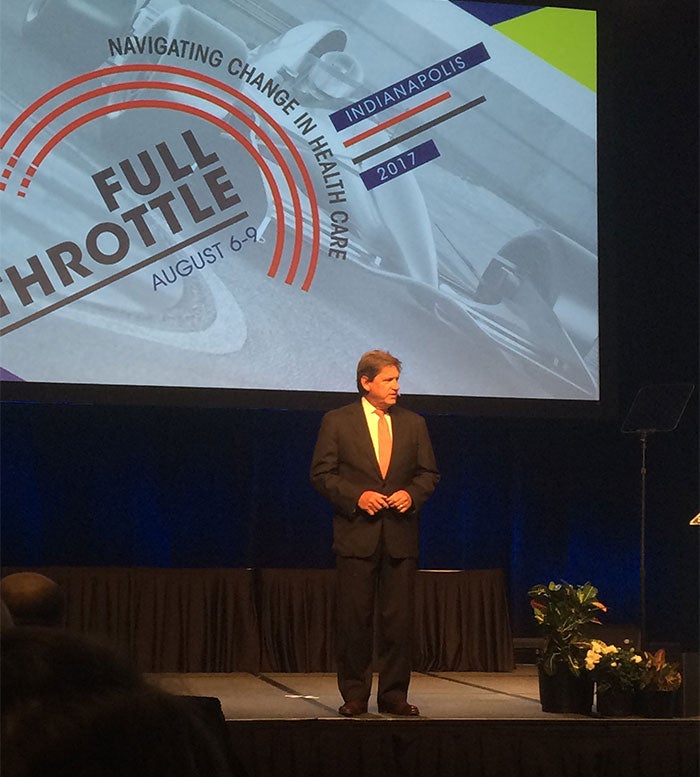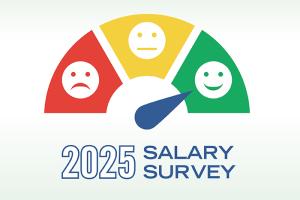ASHE Coverage Day 1: Going 'full throttle' into the future of health care

ASHE President Russell Harbaugh, CHEP, presents the organization's 2018 board at its 54th annual conference.
The American Society for Healthcare Engineering’s Annual Conference & Technical Exhibition is officially underway. This year’s conference, held in Indianapolis, is driving home its “full throttle” theme with programming designed to ensure that health care facility professionals receive education and insight to successfully drive their careers and their organizations into the future.
After this morning’s awards and recognitions program, Paul Keckley, Ph.D., managing editor of The Keckley Report, delivered his keynote address titled “The Future of the U.S. Health System: Key Trends and Tipping Points.”
Keckley, an independent health care researcher and policy analyst, expounded on his knowledge of health care’s major trends and how they affect the future of health facility management. The four shifts Keckley touched on were:
- Payments: moving from fee for service to value
- Scope of services: shifting from care delivery to care delivery plus financing
- Scale of operations: transitioning systems from a local to a regional mindset
- Customers: patients evolving into health consumers
All of these trends denote some aspect of maintaining or improving the quality of health care while ensuring its affordability. Keckley notes that as hospitals take on greater ownership of ensuring affordable care, it will influence the decisions as to which services are offered and where to offer them.

Paul Keckley, managing editor of the Keckley Report delivering the keynote address at the American Society for Healthcare Engineering
The health system of the future, Keckley surmises, will be a hub of health care activity that not only meets patient demand in terms of brick and mortar facilities, but also in technological capability. This strategy of both “clicks and bricks” can be seen through health systems that have developed scalable digital health programs to ensure that care can happen on a continuous basis from any location.
Keckley referred to Mercy Health’s model of creating a central telehealth hub that can partner with other health care organizations to deliver health care digitally by connecting with patients, whether at a separate health care facility, or from home, work or school. This, Keckley, says also plays into the evolvement of patients into health consumers. More and more patients rely on personal health devices to help manage their own care. Hospitals that either provide or sync with these health devices help to provide patients with the information they need to make more informed decisions about their own health.
So far, the two most-used applications for digital health are teleradiology and self-diagnosis for patients in nonurban areas, Keckley says. Other uses also continue to grow and, because “digital health is here to stay,” Keckley says, it’s important that health care facility professionals make their voices heard in the C-suite, to ensure that brick and mortar buildings are designed to be compatible with the future of health care.
Other highlights of the conference include breakout sessions on compliance with the Centers for Medicare & Medicaid’s Emergency Preparedness Rule, managing risks associated with the physical environment and other topics. One of the sessions walked through University of Texas MD Anderson Cancer Center’s five-year journey to improve the patient experience within its inpatient facilities by reducing room temperature variation. The journey also helped it to increase its Press Ganey scores.
Also, read our coverage of Day 2.




